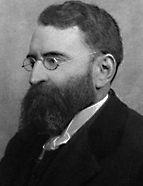

These digressions into history and culture brought new contributions published in the Revista da Universidade de Coimbra. This is the case of El Greco (no. 1, 1912, pp. 648-694), a psychiatric approach to the painter’s work. And the more extensive study, Francisco Rodrigues Lobo, a biographical and critical essay, in successive issues (from 1912 to 1917) and, later, the comprehensive compilation (1920). Surrounding his analysis with multiple historical notes, the study on Rodrigues Lobo allowed him to deepen his knowledge of 17th-century culture. It became a much-referenced work due to Ricardo Jorge’s accusation of plagiarism against Teófilo Braga in 1916, in the newspaper A Capital, in a pamphlet that sparked controversy and was later expanded in Contra um plágio do Prof. Theophilo Braga (1918).
In 1921, Ricardo Jorge returned to Porto, 22 years after his tumultuous departure: on 27 July, he gave one of the plenary lectures at the Luso-Spanish Scientific Congress, entitled A intercultura de Portugal e Espanha no passado e no futuro (The interculturality of Portugal and Spain in the past and in the future), later included in Sermões dum Leigo (Sermons of a Layman, 1925). His historical knowledge underpinned this speech, marked by fraternal rhetoric and proposals for exchanges between the two countries.
He returned in 1923 to the Faculdade de Medicina do Porto [School of Medicine of Porto] for a tribute to Maximiano Lemos, a former colleague and the most renowned medical historian of the Porto School. Ricardo Jorge considered that Maximiano Lemos had developed a 40-year body of work on the history of medicine in a modest environment, which in other cultures would have received wide recognition. In this text, Ricardo Jorge expresses his views on historical knowledge: “All science is inconceivable without a historical foundation. It is history that gives perspective to the pictorial framework of our knowledge, it is history that ensures its continuity and direction, that tells us where we came from and guides us to where we are going” (Sermões dum Leigo, 1925, p. 248). And if the 19th century seemed to him to have been the “century of general history”, he prophesied that the 20th century would be the “century of the history of science”, given the trends observed in various countries and, thus, the future recognition for Maximiano Lemos.
This work is financed by national funds through FCT - Foundation for Science and Technology, I.P, in the scope of the projects UIDB/04311/2020 and UIDP/04311/2020.
